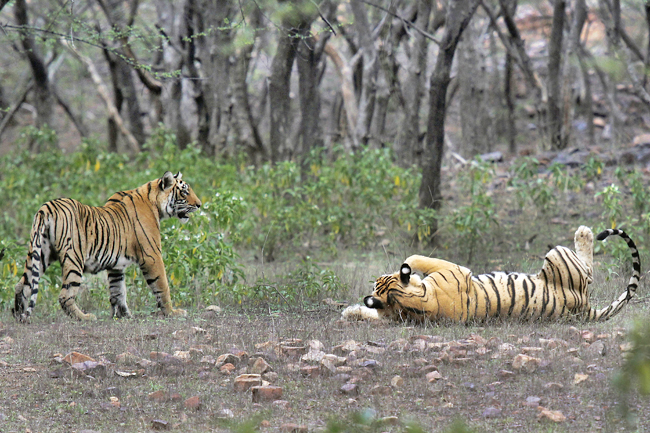BENGALURU (AP) – India doubled its tiger population in a little over a decade by protecting the big cats from poaching and habitat loss, ensuring they have enough prey, reducing human-wildlife conflict, and increasing communities’ living standards near tiger areas, a study published recently found.
The number of tigers grew from an estimated 1,706 tigers in 2010 to around 3,682 in 2022, according to estimates by the National Tiger Conservation Authority, making India home to roughly 75 per cent of the global tiger population. The study found that some local communities near tiger habitats have also benefited from the increase in tigers because of the foot traffic and revenues brought in by ecotourism.
The study in the journal Science said India’s success “offers important lessons for tiger-range countries” that conservation efforts can benefit both biodiversity and nearby communities.
“The common belief is that human densities preclude an increase in tiger populations,” said senior scientist at Bengaluru-based Indian National Academy of Sciences and the study’s lead author Yadvendradev Jhala. “What the research shows is that it’s not the human density, but the attitude of people, which matters more.”
Wildlife conservationists and ecologists welcomed the study but said that tigers and other wildlife in India would benefit if source data were made available to a larger group of scientists. The study was based on data collected by Indian government-supported institutions.


Ecologist with expertise in wildlife population estimation Arjun Gopalaswamy said estimates from India’s official tiger monitoring program mehave been “chaotic” and “contradictory”.
He said some of the figures in the study are significantly higher than previous estimates of tiger distribution from the same datasets. But he added that the paper’s findings seem to have corrected an anomaly flagged repeatedly by scientists since 2011 related to tiger population size and their geographic spread.
Tigers disappeared in some areas that were not near national parks, wildlife sanctuaries or other protected areas, and in areas that witnessed increased urbanisation, increased human use of forest resources and higher frequency of armed conflicts, the study said.
“Without community support and participation and community benefits, conservation is not possible in our country,” said Jhala.
Tigers are spread across around 138,200 square kilometres in India, about the size of the state of New York.
But just 25 per cent of the area is prey-rich and protected, and another 45 per cent of tiger habitats are shared with roughly 60 million people, the study said.
Strong wildlife protection legislation is the “backbone” of tiger conservation in India, said Jhala. “Habitat is not a constraint, it’s the quality of the habitat which is a constraint,” he said.
Wildlife biologist Ravi Chellam, who wasn’t part of the study, said that while tiger conservation efforts are promising, they need to be extended to other species to better maintain the entire ecosystem.
“There are several species, including the great Indian bustard and caracal which are all on the edge,” Chellam said. “And there is really not enough focus on that.” – Sibi Arasu





